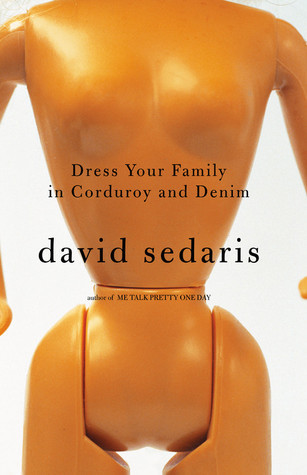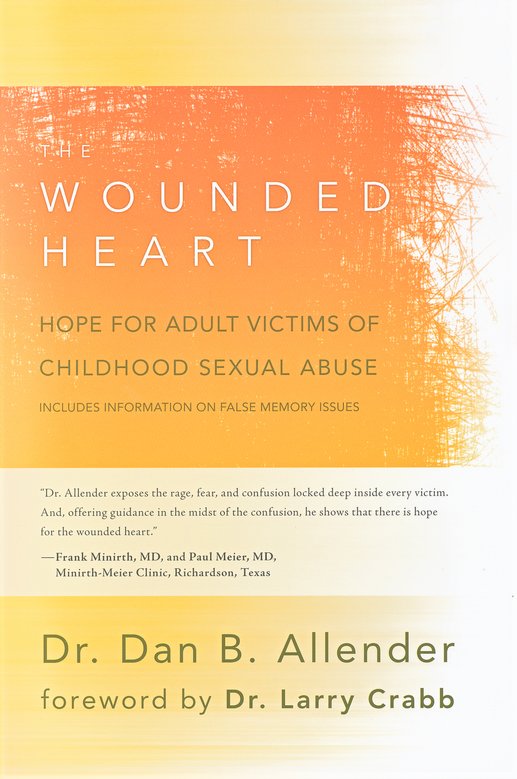by Tori
271 pages
Begun 08/02/2017, Finished 02/14/2019
Yes, those dates are correct. It took me a year and a half to finish this one.
When talking about my most “influential” books, nothing comes close in the category to touching this one. I’ve spent a year and a half slowly trekking through its chapters, and only eight years of therapy can compare with this book in being instrumental to God’s healing in my life. Dr. Allender addresses sexual abuse from a Christian perspective in how we define abuse, how we understand it, and how we heal from it. The journey of healing (even the journey of reading this whole book) is difficult, but he calls readers and victims to the task of healing and wholeness for the sake of the gospel.
To live significantly less than what one was made to be is as severe a betrayal of the soul as the original abuse.
The book is divided into three equally-powerful sections. The first is “The Dynamics of Abuse.” Though everyone’s experience is unique, he draws from his experiences with others and statistics to paint a picture of the problem. To repeat the claim on the book cover: “Someone you know has been sexually abused.” Unfortunately, sexual abuse is “one of the few crimes where the victim feels more shunned and rejected than the criminal.” He exposes the definition of abuse and the accusations of shame that have too long kept victims quiet.
Actually, the first section was the hardest for me to get through. He explains how abuse happens, especially to children. I had never thought to ask that question. The grooming process was only a sinister mystery, especially heinous in its hidden nature. Yet reading his explanation and detailed stages of the grooming process was so accurate and horrifying that it probably took six months to fully get through that chapter. Even now, my cheeks flush to remember seeing something so privately nightmarish written out step-by-step like a doctor telling a terminal cancer patient exactly how the disease will ravish her body from start to finish.
Before describing the grooming process, however, he sets the stage by answering the question – why are some children susceptible? The answer, often, lies in the home. Though there are exceptions to everything he says, most children who fall prey to sexual abuse were raised in “an atmosphere in which a child is vulnerable to abuse and/or had no one to whom to turn after abuse.”
Understanding the dynamics of abuse is harrowing, and I caution anyone who picks up this book to read it slowly. Give yourself time and grace. It’s a lot to swallow, whether you’ve lived it or not.
The second section, “The Damage of Abuse,” can be equally difficult. Whether your heart twists to learn of the lifelong, pernicious struggles of victims or you’re reading your own personal trials identified for the first time then laid bare, these chapters require as much patience and determination.
With chapters on powerlessness, betrayal, ambivalence, and more, Dr. Allender is careful to use a gentle voice when sharing the disastrous effects of abuse while also keeping a Christian worldview. The ways in which some victims cope or protect themselves can lead to lifestyles that deaden, harden, or further cripple the victim, and Dr. Allender both validates why this happens while also calling victims to a healthy, rich life in Christ.
He does not shy away from the topic of sin and the ways in which different profiles of relational styles can keep us from fully loving those around us.
The damages of abuse primarily drive wedges between victims and themselves, others, and God. Though in all this, his intent is never to shame but to demonstrate that this is not the life that God wants for us.
I hoped the last section, “Prerequisites for Growth,” would be easier to read, especially as the first chapter is called “The Unlikely Route to Joy.” Like the rest of the book however, I was both surprised and moved by the content far beyond what I expected.
Yet throughout this section and also throughout the whole book, Dr. Allender is full of hope. Though I and most readers must take it slowly, no one is trapped under the current without sight of land. The point of the book is to lead brokenness through the exercise of healing without skipping a step or giving our pain any foothold with denial.
Our God is also one who suffered and the only one who can answer the questions: “Where was God when I was abused? Why doesn’t He take away, the pain, struggle, memories? Why didn’t He intervene before I made destructive decisions?” Dr. Allender shares this quote by John Stott:
I could never myself believe in God, if it were not for the cross. The only God I believe in is the One Nietzsche ridiculed as “God on the cross.” In the real world of pain, how could one worship a God who was immune to it? … There is still a question mark against human suffering, but over it we boldly stamp another mark, the cross which symbolizes divine suffering. “The cross of Christ… is God’s only self-justification in such a world” as ours.
If your story includes any of the elements covered in this book, I hope you read it. If you can’t buy it for yourself, message me. I’ll get it to you. I think it’s important.
And I do think everyone should read this book. I started it a few months before #MeToo began, and I appreciated the awareness that the campaign caused. Awareness, however, should not be enough. We have to know about this epidemic, and we have to see it with clear eyes and God-given hope. I encourage you to read this book with an excerpt from the author:
Words To a Friend
You are the friend of someone who has been abused, and you are untrained, inexperienced, and scared. If I am accurate so far, then you have also seriously thought about backing out of the relationship with your abused friend. Not that you are going to treat her like a leper or avoid all contact, but the issue of abuse, the current struggles and fears, are off-limits.
My counsel to you is simple: Don’t back off from the frightening terrain of a wounded heart. You may say the wrong things and even cause more harm, but the worst harm is to turn your back. Accept your limitations, but also acknowledge the fact that you are on the front lines of the battle. You may not like to hear it but the fact is, you are a foot soldier, an infantryman who is often the first to take the fire of the enemy.
As a therapist, I see your friend once, or maybe twice a week. You see her every day. I deal with significant issues in her soul, but you talk about the same issue, and even more. I may be necessary to the process, but you are even more so. Let me say it again: You are very important as a friend who will pray, talk, laugh, cry, read, embrace, shout, bake cookies, drive to Little League, and live life in intimate proximity. Don’t allow you inexperience or your own personal past to keep you from loving well.


















